Sugar gliders are very popular exotic pets. They’re adorable, funny, and very beautiful animals. There are many different colors that sugar gliders can have. The color they’re born in all depends on their genetics. I’ve previously given an overview of the Leucistic white sugar glider, so I figured it was time to do the same for Mosaic Sugar Gliders.
I will cover what exactly a mosaic glider is, the different variations of mosaic gliders that exist, where you can buy one, and more. Let’s get started!
What are mosaic sugar gliders?
Mosaic sugar gliders are among the most unique of all sugar gliders because they can have an endless variety of patterns. Because of this, no two sugar gliders that have the mosaic trait will look exactly the same! The patterns and colors they exhibit are completely random, which sometimes ends up in stunning results. However, while the patterns are random, breeders have been trying for years to influence the patterns they exhibit through selective breeding.
They do this by taking two gliders with highly desired patterns and having them reproduce. By doing so, there’s a higher chance (but not guaranteed) that their offspring will have similar markings.
If you want to breed a mosaic glider, you have to make sure that both parents have this trait. Otherwise, if only one of the parents has this trait there’s a 50% chance that the glider will not end up inheriting the mosaic trait. This gene can never be recessive, it’s either visible, or the glider does not have it.
Mosaic is considered a trait, rather than a color. The reason is that any color sugar glider can be mosaic.
Variations
As previously stated, mosaic sugar gliders can have an endless variety of different patterns. However, while there are many different kinds of variations, there are 5 distinct pattern variations that have certain names. I’ll go over them one by one and give a description (along with a photo) so that you can recognize the different variants.
Piebald Mosaic
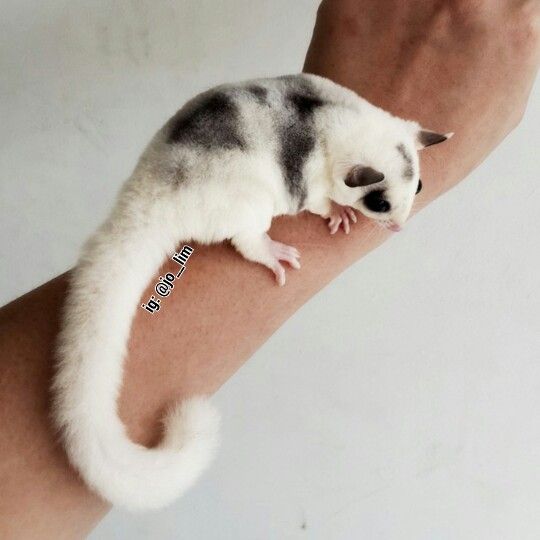
The piebald mosaic sugar glider can be recognized by its characteristic areas of unpigmented (often white) hair on its back in combination with patches of dark hair. The pattern they exhibit is usually not symmetrical but very random (although there is a small chance that it will end up symmetrical due to the random nature of their pattern).
Interestingly enough, the skin under the hair is also not pigmented under the non-pigmented hair and pigmented under the dark hair. They are also considered to be the rarest variation.
Silver Mosaic
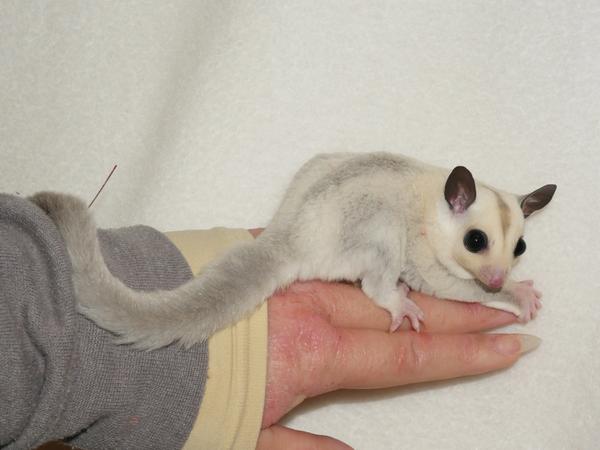
The silver mosaic sugar glider is often mistakenly called the platinum-colored mosaic. However, since these gliders do not have any platinum genetics, they are not considered platinum gliders.
They can be recognized by their silver hair color. It’s not actually a silver color. Instead, their gray markings have powdered out which gives it its silver appearance.
Ringtail Mosaic
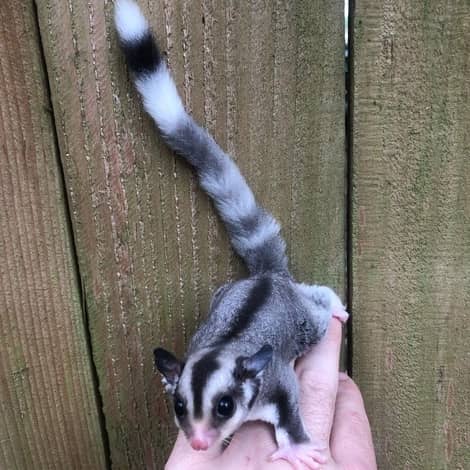
As the name suggests, the ringtail mosaic has a pattern of rings on its tail. The rings they have on their tail can range from black to white, with the rest of their tail being the opposite color. There can be only 1 ring or multiple rings present, depending on the glider.
True Platinum Mosaic
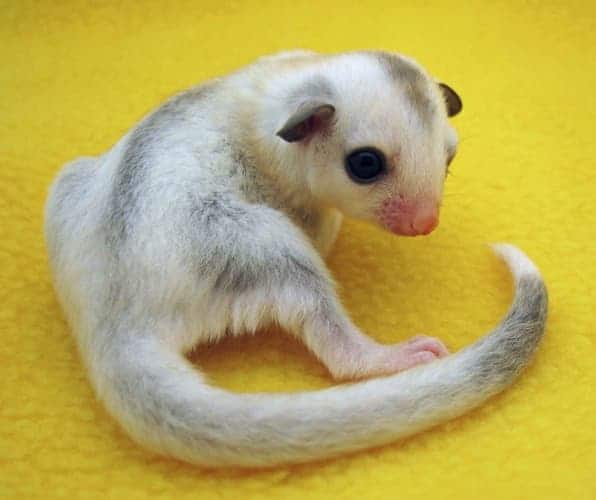
A true platinum mosaic has the standard characteristics of a mosaic glider (e.g. white collar, ringtail) but at the same time, it’s also genetically a platinum sugar glider. They are usually platinum in color with darker markings along their back and head.
White Mosaic
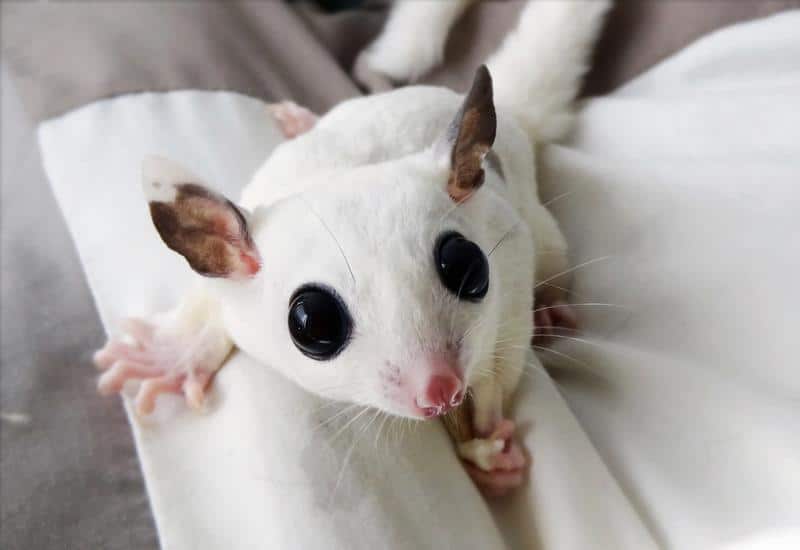
The white mosaic can be recognized by its white fur with almost no dark spots. They are often mixed up with the Leucistic sugar glider because they both have a white color. However, while they might look quite similar, they are not the same. There are differences that separate them. The most striking differences are that the white mosaic often has dark spots on their ears caused by pigmentation which the Leucistic glider does not have.
Are mosaic gliders expensive?
Sugar gliders come in different price ranges. Standard grays are usually the cheapest, while white gliders can be over 3 times as expensive. Mosaic gliders usually fall somewhere in the middle – they’re not as cheap as standard grays, and not as expensive as leucistic gliders.
However, the price of mosaic gliders is not uniform – it depends on their pattern and the variation. On average, you can expect to spend upwards of $800 for a mosaic sugar glider and it’s not unheard of to pay more than a thousand dollars for them.
To learn more about the costs associated with owning a sugar glider, check out this price guide.
Mosaic gliders for sale
There are many breeders that sell mosaic sugar gliders, such as:
It’s also an option to find a sugar glider breeder near you. That way, you can check out the glider in person and get acquainted with it before you decide to buy it.
Final words
So, that’s all you need to know about mosaic gliders. Which variation is your favorite? I hope this article answered all your questions and helped you make a decision about whether or not a mosaic sugar glider is right for you. If it didn’t, don’t hesitate to leave a comment and I’ll get back to you as soon as possible.
If you would like to learn more about keeping a sugar glider as a pet, check out this guide. In that guide, I discuss everything beginner sugar glider owners need to know.
Also, if you’d like to learn more about what sugar gliders can eat, check out the sugar glider nutrition guide.
- How Long Do American Eskimo Dogs Live? Important Factors and Care Tips - September 29, 2023
- Do American Bulldogs Need Grooming? Essential Tips and Care Guidelines - September 29, 2023
- Do Bengal Cats Enjoy Playing? Essential Tips for Keeping Them Active - September 29, 2023